One of America’s most singular linear parks-slash-overwater recreation zones, the Old Seven Mile Bridge in the Florida Keys, reopened last month to cyclists, pedestrians, anglers, selfie-snappers, film location scouts, and sunrise/sunset-gazers following the completion of an expansive $44 million rehabilitation project.
Connecting the island-bound city of Marathon in the Middle Keys with minuscule Pigeon Key, the National Register of Historic Places-listed former railway bridge was shuttered in 2017 so that it could undergo much-needed restoration work to make the 2.2-mile-long span safer for recreational use. As detailed by the Miami Herald, work entailed installing new decking along with bicycle and pedestrian handrails. Extensive repairs to its structural steel and concrete pylons were also carried out to ensure the longevity of this crowd-drawing Floridian landmark, which stands as a sort of superlatively lengthy, subtropical variation of New York’s Walkway Over the Hudson State Historic Park and other similarly disused swaths of elevated railway that have been transformed into footbridges and parks.
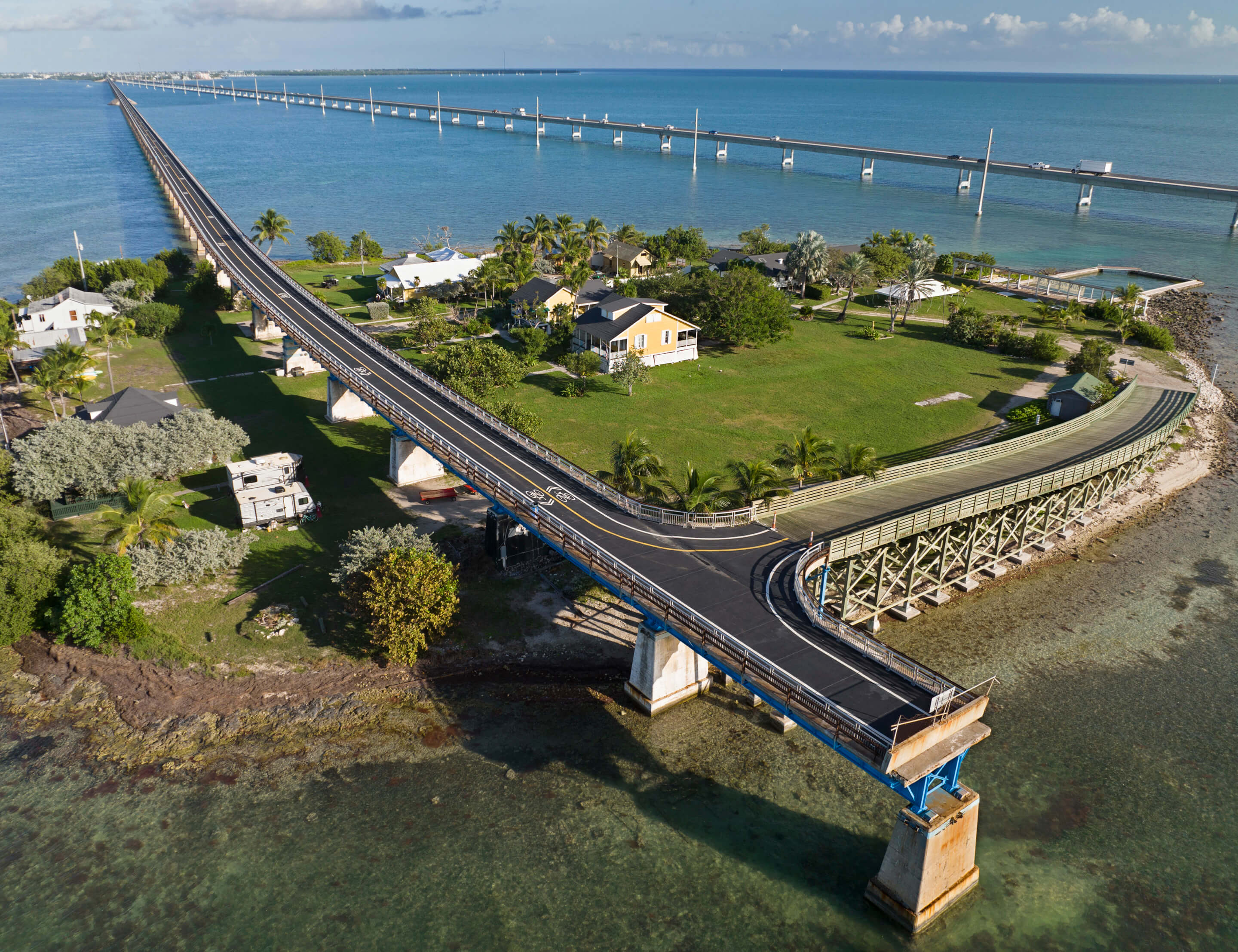
The original Seven Mile Bridge—originally known as the Knights Key Bridge and today locally referred to as Old Seven—first opened for recreational use in 1982 after the new Seven Mile Bridge, a (technically) 6.79-miles-long segmented bridge that’s part of the scenic Overseas Highway, opened to vehicular traffic directly alongside the older structure. Quickly becoming a popular destination for recreational pursuits following the debut of its U.S. Route 1-carrying replacement, the historic span did, however, remain open to light vehicular traffic. In 2008, however, the Florida Department of Transportation eliminated all vehicle access after the structure began showing serious signs of wear and tear. The span remained open to pedestrians and cyclists up until its five-year closure in 2017.
Old Seven was completed in 1912 as just one of roughly 40 spans (the most “famous and spectacular”span per Tony Perrottet, writing for Smithsonian Magazine) comprising New York-born industrialist Henry Flagler’s Over-Sea Railroad, the Key West extension of his Florida East Coast Railway. Skeptics initially dismissed the the 127-mile-long overseas extension as “Flagler’s Folly” although it was widely heralded as a marvel of modern engineering and as the (latest) eighth wonder of the world when completed. Best-known outside of Florida as a founder of the Standard Oil Company, Flagler was also a railroad tycoon instrumental in the development of Palm Beach and Miami and, as such, the Flagler name is ubiquitous across the state.
In 1938, three years after suffering a considerable battering from the Labor Day Hurricane of 1935, the original railroad bridge, or what was left of it, was converted to accommodate vehicular traffic as part of the Overseas Highway. Although its swing span over the Moser Channel has since been removed, most of the original, post-hurricane bridge is still very much standing.
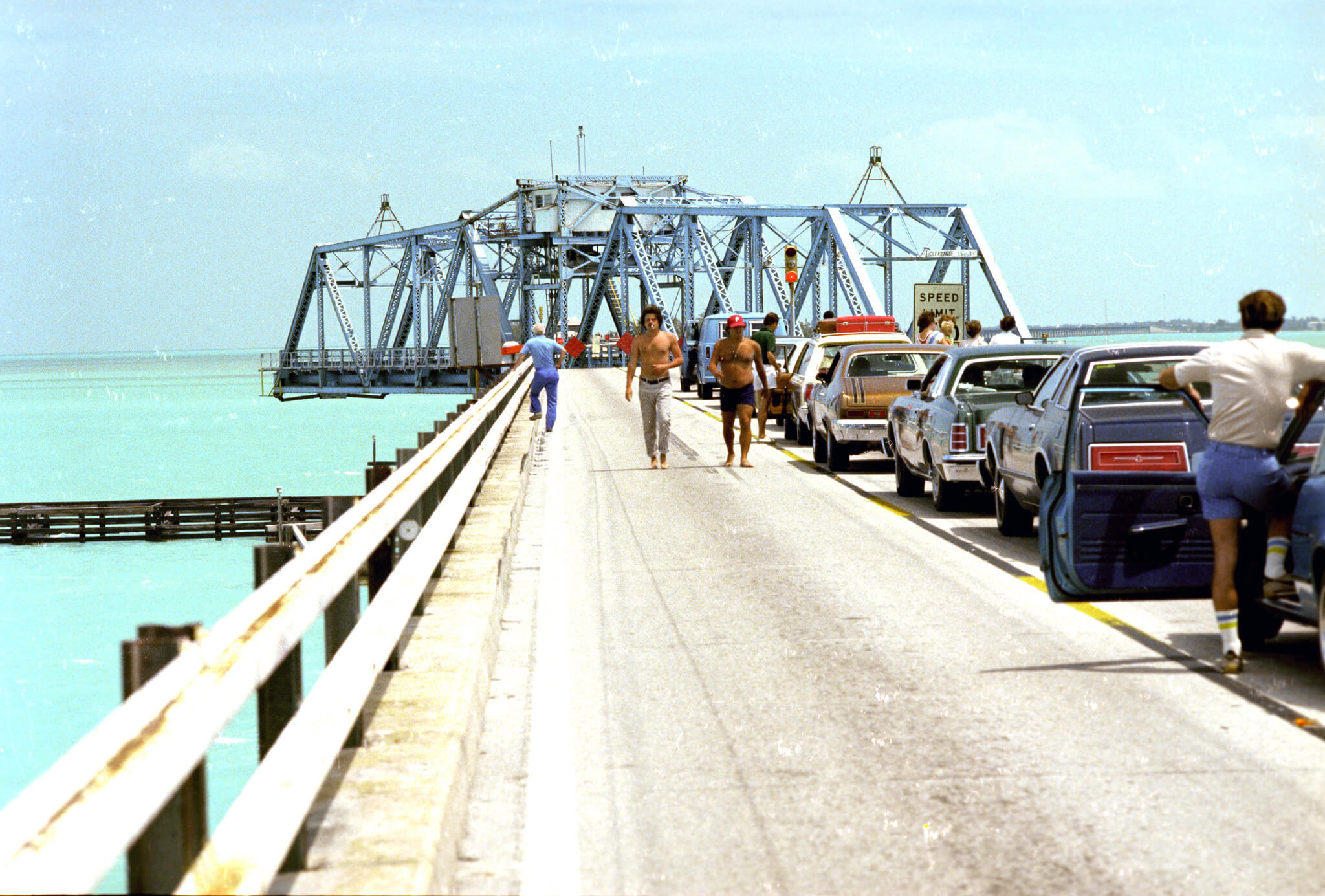
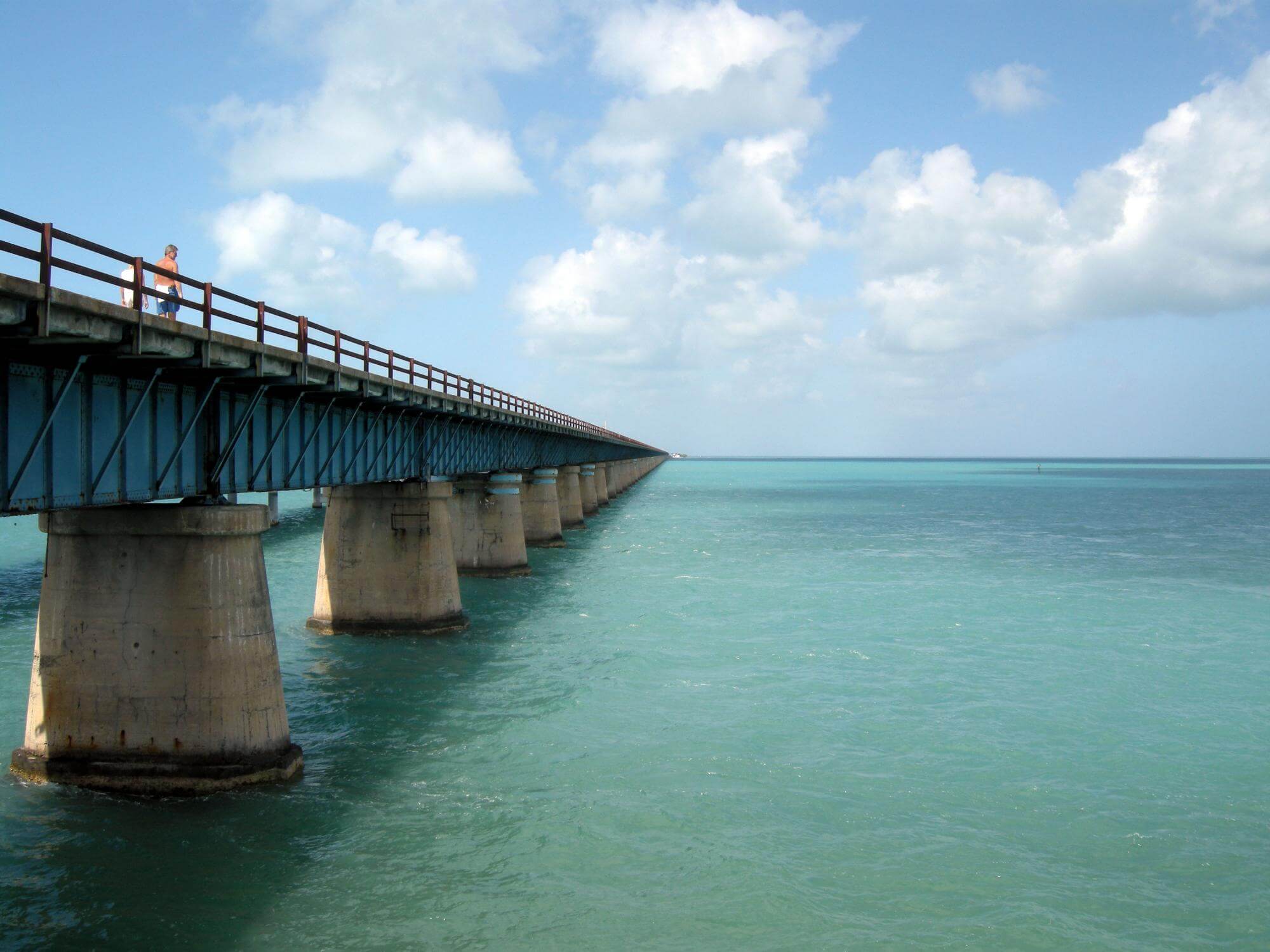
“What made the project challenging was that it is a historic bridge, and that we had to restore the bridge to the same aesthetic fabric as the original,” said project manager and Florida Department of Transportation contractor Tony Sabbag in a news release.
And while accessing Pigeon Key by private car was banished well over a decade ago, visitors to Old Seven can still access the 5-acre island—once housing railway workers, it is now home to a maritime science center, railroad museum, and fishing pier—by foot, bicycle, or other means via an existing exit ramp at the terminus of the newly reopened bridge. (There’s also daily ferry service from Marathon). As noted by Time Out, a 60-person passenger tram providing access to Pigeon Key, which is tucked beneath Old Seven and includes an 11-building historic district, is set to open later this spring.
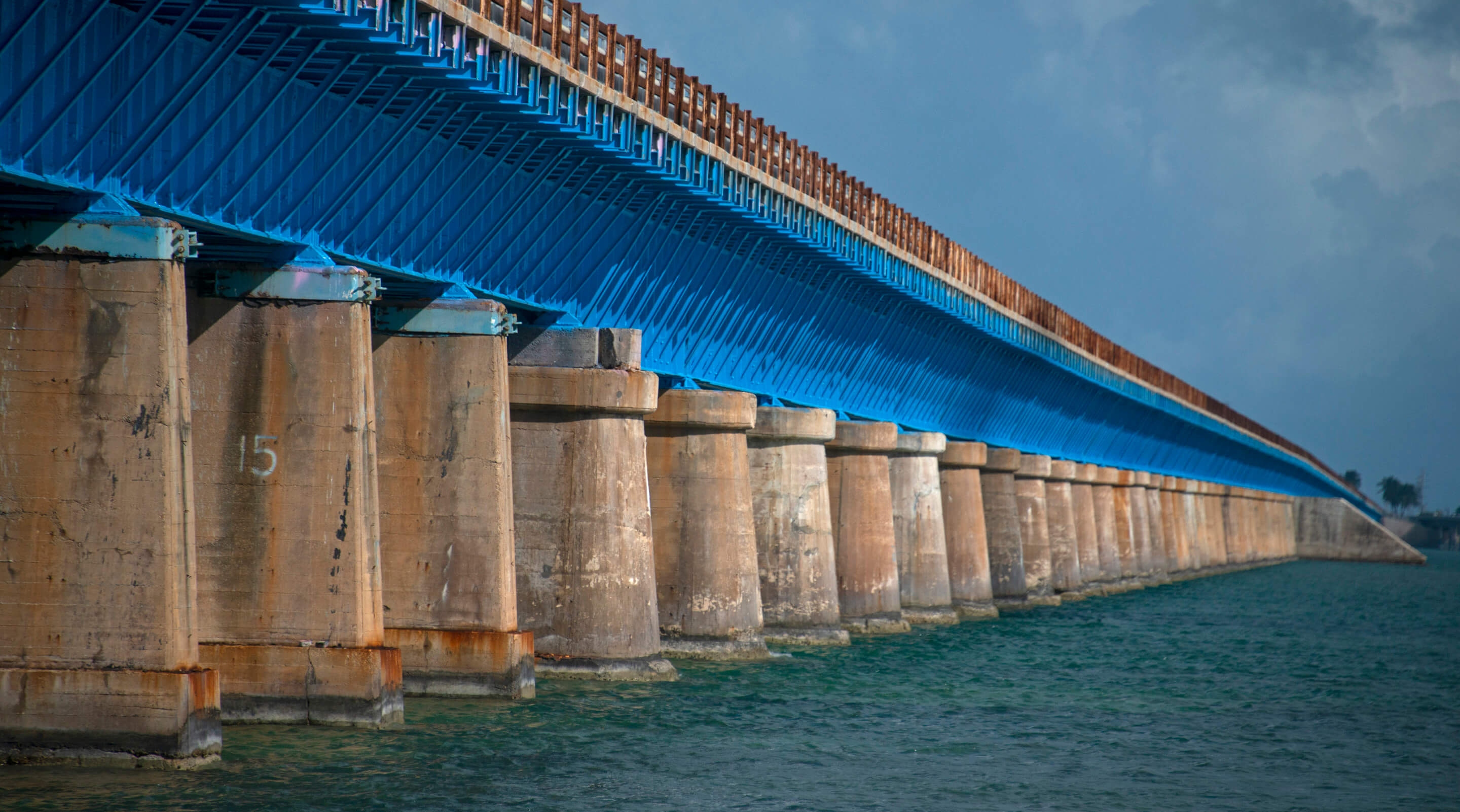
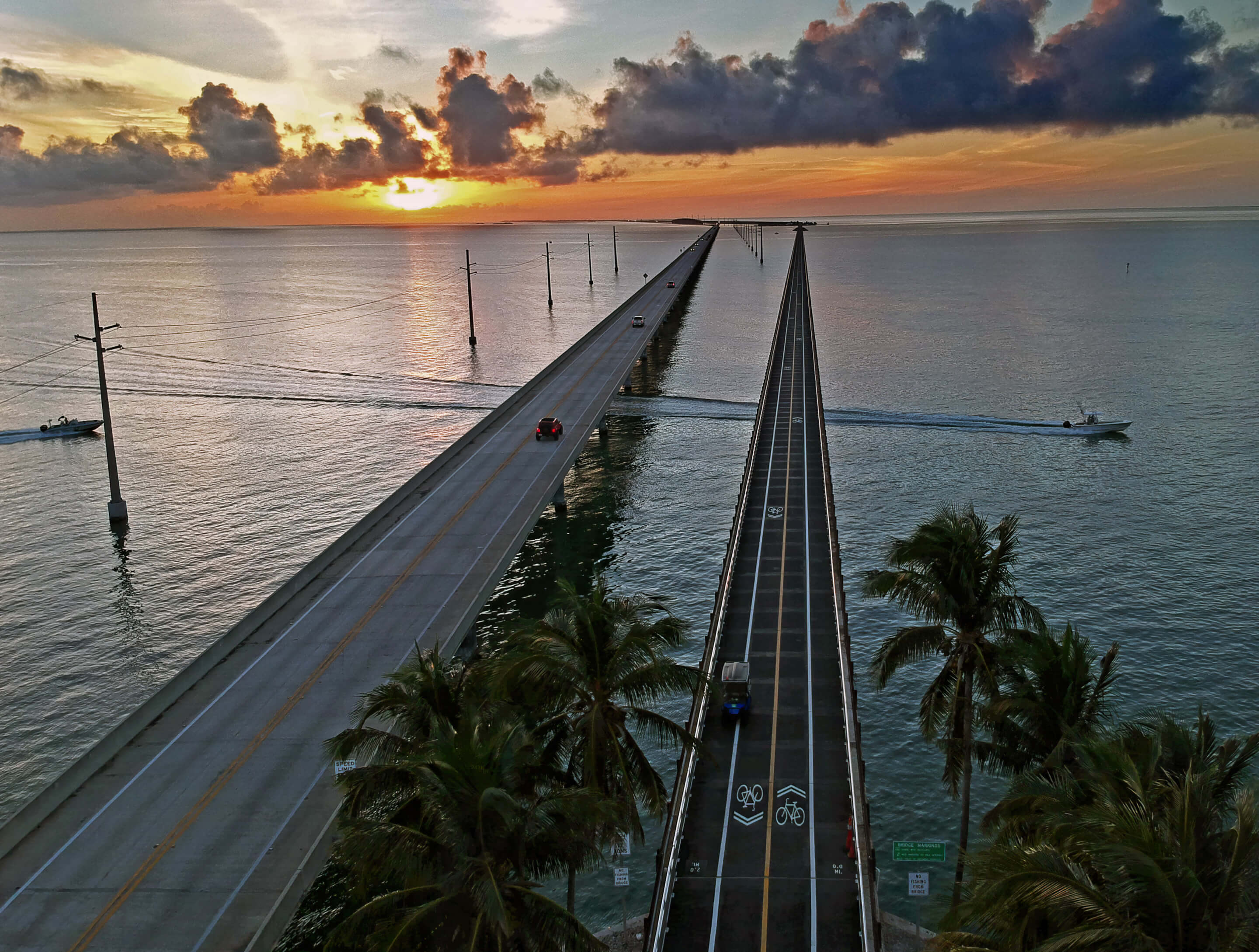
Per the Miami Herald, the renovation of Old Seven was largely funded by the state although Monroe County contributed $2.7 million toward the project.
“Nearly five years ago now, when they did close down the bridge, that year prior nearly a quarter of a million people came out to use this bridge,” said Kelly McKinnon, executive director of the nonprofit Pigeon Key Foundation, in a statement. “It really is more of a linear park, where people can come out and recreate and go biking, walking, cycling, running, take a look at all the marine resources whether it be spotting turtles, sharks, rays, tarpon … it’s just an unbelievable experience for individuals and families to come out and take advantage of.”











